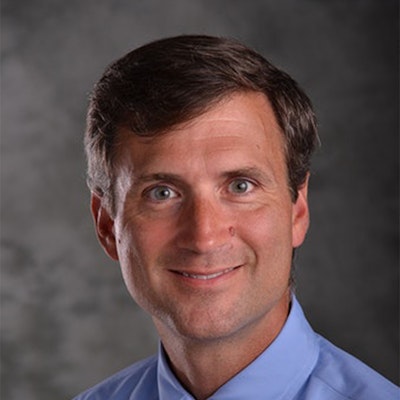Strength in Numbers: How Global Innovation, Collaboration, and Dedication are Bringing Us Closer to a Cure for Every Child
Posted on
by
Brian Rood

A Message from the Children’s Brain Tumor Network Executive Board Co-Chair
Like so many of us during the month of September, I’ve come to regard Childhood Cancer Awareness Month as a time to take stock and reflect -- on the bravery and strength of the children and families I’ve encountered in my clinical practice, and on the progress still to be made in the struggle against childhood brain cancer.
Reflecting on this community, it is indeed the children, young adults, and families that first compelled me to take up this work. When I was just beginning my medical training over 25 years ago, I was drawn to the field of pediatric medicine because of the genuine, down-to-earth, joyful environment that surrounds any place that puts children first. And in a profession like medicine, which can take itself entirely too seriously, it is constantly humbling and refreshing be surrounded with children who tend to live in the moment and aren’t terribly impressed with the trappings of reputation and status.
Progressing further, I found myself drawn to pediatric neuro-oncology chiefly because of the deeply fulfilling relationships that develop traveling along with families during the terrible ordeal of their child's cancer treatment. These relationships provide the fuel to drive me forward in this work.
It is also a privilege to collaborate with the many doctors, nurses, scientists, research and clinical staff, administrators, and others who work on behalf of children in pediatric healthcare. All of these dedicated professionals share a common commitment to always ask, “what is best for this child’; a fundamental connection that helps to cut through all other distractions and provides a guiding principle that everyone can agree upon.
Despite the dedication shared amongst my professional peers, there continue to be too many unanswered questions and unmet needs in the fields of scientific research and clinical care for children with brain tumors. Even when I and my colleagues have been able to bring a cure to our patients, treatment often has come at the cost of lifelong quality-of-life issues.
At this point, traditional treatment approaches for childhood brain cancer simply aren’t doing a good enough job providing the outcomes that our patients deserve. Now more than ever, I believed that opportunities abound to uncover better treatment strategies for these children.
In 2015, when I was first introduced to what was then called the Children’s Brain Tumor Tissue Consortium (CBTTC), I was struck by the consortium’s ability to bring together scientists, clinicians, foundations, and patient families to form powerful collaborations that have since generated world-class biorepositories, highly annotated longitudinal clinical and -omic datasets, innovative cloud-based data analysis platforms, and critical attention amongst policymakers, institutional leaders, industry, and the public to the immediate need for more resources and effort to fight these devastating diseases in children and young adults.
My decision to join Dr. Angela Waanders this year as Co-Chair of the Children’s Brain Tumor Network (CBTN) Executive Board was prompted by a recognition of the immense talent, resources, and dedication that have come together to address the tough challenges encountered in pediatric brain tumor research. As I step into this new role, I am determined to help the leadership team drive CBTN’s vision to uncover cures for every child and young adult who suffers from a brain tumor, as swiftly as possible.
As this organization transitions from the CBTTC into a new chapter as the CBTN, I have been most excited by our focus on building partnerships with other groups to generate cutting-edge scientific discoveries. These partners have never before been engaged in pediatric brain tumor work, but CBTN is able to leverage its tissue and data collections to support innovative lines of scientific study that could save lives the world over. This is only possible because of the collective vision of CBTN’s member institutions to pool their tissue, data, and intellectual resources; something that had been previously tried but had always failed.
The CBTN membership, along with our partners at the Pacific Pediatric Neuro-Oncology Consortium (PNOC), continue to develop a world-class infrastructure to handle the mechanics of therapeutic development. The partnership between these groups is enabling us to move from high-quality data generated from brain tumor tissues, to in-depth analysis uncovering unique tumor biology, to therapeutic clinic trials designed to exploit that biology to further data generation from trial participants; this comprehensive strategy is truly different and exciting.
As the CBTN continues to grow and evolve, I would like to again stress that there really is strength in numbers. To clinician researchers and their institutions, I would point out that siloed attempts to marshal enough tissue and data resources in one institution almost always fall short of the rapidly advancing requirements for cutting edge research. It is through combining our resources and collaborating on their use that we can provide definitive results that will really make a difference. In addition, converting tissue to data, essentially “digitizing it”, means that it can be analyzed in any number of contexts without exhausting it. We are here to help expand and energize your research.
For advocates and partners in this mission, I would say that the CBTN provides a way for your local efforts to create global impact. Getting the right tissue and data resources into the hands of the most expert scientists in any given area is our forte. Helping us to do that will have a broad and meaningful benefit for our children with brain tumors; come join us!
Brian R. Rood, MD
Director, Clinical Neuro-Oncology; Medical Director, Brain Tumor Institute; Children’s National Health System
Executive Board Co-Chair; Children’s Brain Tumor Network